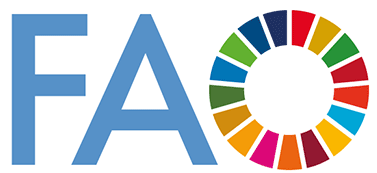Control de sigatoka negra en banano con fungicidas orgánicos en época de lluvia
Resumen
El banano (Musa sp.) es un fruto tropical con alto consumo mundial por su calidad, beneficios nutricionales y vida en anaquel. Sus hojas son afectadas por Sigatoka negra (SN, Mycosphaerella fijiensis Morelet), disminuyendo fotosíntesis y rendimiento. Se evaluó la aplicación de fungicidas orgánicos sobre la severidad de Sigatoka negra en el cultivo de banano. El ensayo se realizó en Fumipalma, S.A., provincia del Guayas, Ecuador. Se utilizaron plantas del cv. Williams, sembradas a 3m x 2,5m (1333 plantas·ha-1). Las aplicaciones se iniciaron en plantas con 12-14 hojas, en las hojas 1 (H1) y 2 (H2), en la parte derecha de la nervadura central (metodología single leaf test; SLT). Se utilizó un diseño de experimentos en bloques completos al azar con seis tratamientos y cuatro repeticiones. Se evaluó la evolución de la enfermedad (%, Fumipalma S.A.) hasta 35 días después de la aplicación, área bajo la curva del progreso de la enfermedad (AUDPC) en H1 y H2. La evolución de la enfermedad en H1 en SLT, estuvo entre 16,60-50,00%; la menor la presentó Progranic cinnacar y el testigo con el mayor valor. El índice de severidad (AUDPC) presentó diferencias estadísticas con valores entre 217,4-556,1. El área afectada estuvo entre 27,50-56,25%. El AUDPC presentó diferencias estadísticas significativas, el testigo fue más afectado. La aplicación de fungicidas orgánicos genera control sobre SN, el porcentaje de área afectada y el índice de severidad de la enfermedad en el testigo fue mayor. En H2 la severidad de la enfermedad fue mayor que en H1.
Palabras clave:
Mycosphaerella fijiensis, manejo, single leaf test, severidad, control.
ABSTRACT
Banana (Musa sp.) is a tropical fruit with high worldwide consumption due to its quality, nutritional benefits and shelf life. Its leaves are affected by Black Sigatoka (BS, Mycosphaerella fijiensis Morelet), decreasing photosynthesis and yield. The application of organic fungicides was evaluated on the severity of Black Sigatoka in the banana crop. The trial was carried out in Fumipalma, S.A., provincia del Guayas, Ecuador, with Plants of cv. Williams, sown at 3m x 2.5m (1333 plants·ha-1). The applications were started in plants with 12-14 leaves, in leaves 1 (L1) and 2 (L2), in the right part of the midrib (single leaf test methodology; SLT). A randomized complete block design of experiments with six treatments and four replications was used. The evolution of the disease (%, Fumipalma S.A.) was evaluated up to 35 days after application, area under the curve of the progress of the disease (AUDPC) in L1 and L2. The disease progression of L1 in TLS was between 16.60-50.00%; the lowest was presented by Progranic cinnacar and the control with the highest value. The severity index (AUDPC) presented statistical differences with values between 217.4-556.1. The affected area was between 27.50-56.25%. The AUDPC presented significant statistical differences, the control was more affected. The application of organic fungicides generates control over BS, the percentage of affected area and the severity index of the disease in the control was higher. In L2 the severity of the disease was greater than in L1.Keywords:
Mycosphaerella fijiensis, management, single leaf test, severity, control.Descargas
Publicado
Cómo citar
Número
Sección
Licencia
La editorial "Universo Sur", de la Universidad de Cienfuegos, publica el contenido de la Revista Científica Agroecosistemas bajo una Licencia Creative Commons Atribución-NoComercial-SinDerivar 4.0 Internacional.
© Podrá reproducirse, de forma parcial o total, el contenido de esta publicación, siempre que se haga de forma literal y se mencione la fuente.







